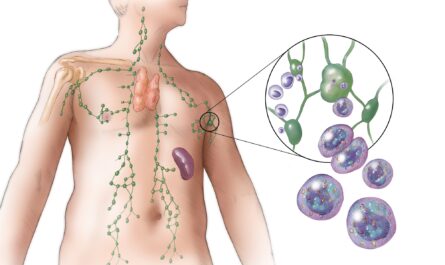Some of the most common modalities utilized today include X-rays, CT scans, MRI, ultrasound, and nuclear medicine imaging techniques like PET scans. Each different type of medical imaging technology provides unique diagnostic information to help physicians detect, diagnose, treat, and monitor a variety of medical conditions.
X-Rays
One of the earliest and most widely used forms of Medical Imaging Equipment is the simple X-ray. X-rays use ionizing radiation to generate images of bone, soft tissues, and internal organs. Standard X-rays are quick, affordable examinations that can detect fractures, tumors, infections, and other abnormalities. However, X-rays only provide a two-dimensional view and expose patients to a small amount of radiation. Advancements in digital radiography have improved image quality while reducing radiation doses compared to traditional film radiography. Areas like mammography also utilize specialized low-dose X-ray equipment tailored for screening breast tissue.
Computed Tomography (CT) Scans
CT scanning represents a major technological leap forward from conventional X-rays. With CT scanning, X-rays are combined with computer processing to generate cross-sectional images, or “slices”, of the body. This allows clinicians to visualize internal organs and structures in precise anatomical detail without having to perform invasive surgery. CT is especially useful for evaluating blood vessels, the lungs, bones, and soft tissues. Recent innovations continue to enhance CT scanning by improving spatial and contrast resolution as well as expanding functionality. These include dual-energy CT, CT angiography, perfusion CT, and interventional CT guidance for biopsies and drainage procedures.
Magnetic Resonance Imaging (MRI)
MRI utilizes powerful magnetic fields and radiofrequency pulses rather than ionizing radiation to generate highly detailed images of the body’s internal structures and tissues. MRI excels at distinguishing between soft tissues, making it superior to CT for imaging the brain, spinal cord, joints, abdomen, and pelvis. MRI also provides excellent anatomical and functional information without exposing patients to radiation. Key areas where MRI continues to progress include higher field strength systems, faster scanning protocols, advanced contrast agents, MRI-guided interventions, and new sequence/contrast combinations optimized for specific clinical needs and anatomical areas.
Ultrasound Imaging
Ultrasound imaging goes by many names including ultrasonography, sonography, and echography. It evaluates tissues and organs by exposing them to high-frequency sound waves and analyzing the echoes. Ultrasound imaging is widely used due to its wide availability, lack of radiation exposure, low cost, and ability to image in real-time. Common clinical uses of ultrasound involve obstetric and gynecological exams, examination of vessels and soft tissues, guidance for invasive procedures, and cardiac imaging. Mobile and compact ultrasound machines have increased accessibility in hospital departments as well as emergency and rural care settings. Future advances may involve more sophisticated 3D and 4D ultrasound, elastography, microbubble contrast agents, and therapeutic applications.
Nuclear Medical Imaging Equipment
Nuclear medicine exams like positron emission tomography (PET), single-photon emission computed tomography (SPECT), and bone scintigraphy utilize radioactive tracer materials to produce images based on physiological function rather than anatomical structure. In PET imaging specifically, radiolabeled glucose or other molecules may be injected to track metabolic activity at the cellular level which can aid in cancer detection and staging. The hybrid technology of PET/CT has revolutionized oncology by precisely locating cancerous tumors and evaluating treatment response. Similarly, improvements in SPECT/CT now provide enhanced diagnostic accuracy for conditions like cardiovascular disease and infection imaging. Advancements continue in tracer development, scanner design, image reconstruction techniques, and multimodality fusion with CT/MRI.
Image Guided Interventions
In recent decades, medical imaging has taken on an increasingly important role in minimally invasive therapies and surgical procedures. Image guidance allows clinicians to precisely navigate instruments within the body and target specific anatomical areas under real-time visualization. Some common image guided procedures include biopsies, drainage of fluid collections, ablation of tumors, placement of stents/stents, vertebroplasty/kyphoplasty, and neurological interventions. CT, fluoroscopy, MRI, and ultrasound are popular guidance modalities that directly reveal the location and movement of instruments during internal operations. Emerging applications also encompass robotic, endoscopic, and navigational technologies integrated with medical imaging data. This is revolutionizing interventional treatments by reducing risks, enhancing precision, enabling new techniques, and expediting recovery times.
Advancing Healthcare with Medical Imaging Equipment Innovation
As this article has highlighted, medical imaging continues to rapidly evolve through technological advances, expanded applications, and multidisciplinary integration. These innovations in medical visualization are revolutionizing diagnosis, treatment planning, image-guided interventions, and therapeutic monitoring. They are also driving major improvements in patient care, outcomes, and quality of life across wide-ranging clinical specialties. With the evolution of techniques like artificial intelligence, 3D printing, multimodality combinations, molecular imaging, personalized medicine, and targeted contrast agents, the next chapter of medical imaging promises to transform healthcare even more over the coming years. By offering deeper insights into anatomy and pathology, medical imaging serves as a powerful tool for advancing scientific understanding of human health and pushing the boundaries of quality, accessibility, and precision in clinical practice worldwide.
*Note:
1.Source: Coherent Market Insights, Public sources, Desk research
2.We have leveraged AI tools to mine information and compile it




